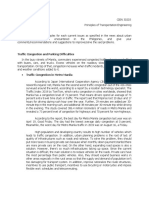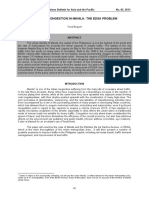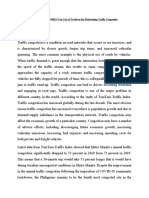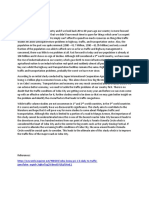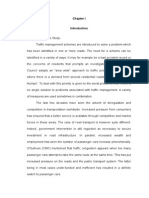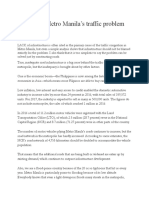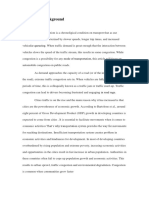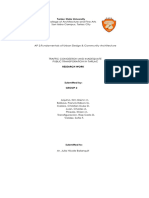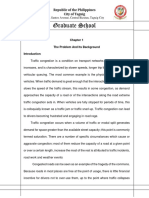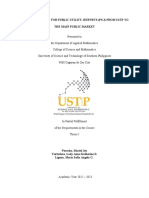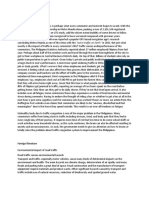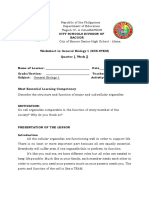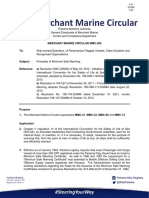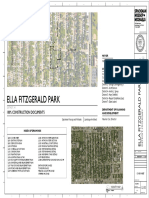0% found this document useful (0 votes)
43 views10 pagesIssue Analysis
The document discusses the severe traffic congestion issues in urban areas of the Philippines, particularly in Metro Manila and Davao City, highlighting its causes, impacts, and current measures being taken to address the problem. It emphasizes the need for better traffic management, infrastructure improvements, and innovative engineering solutions to alleviate congestion and improve mobility. Despite ongoing government initiatives, challenges remain due to rapid urban growth and increasing vehicle dependence, necessitating further strategic planning and enforcement.
Uploaded by
Charles JustinianiCopyright
© © All Rights Reserved
We take content rights seriously. If you suspect this is your content, claim it here.
Available Formats
Download as DOCX, PDF, TXT or read online on Scribd
0% found this document useful (0 votes)
43 views10 pagesIssue Analysis
The document discusses the severe traffic congestion issues in urban areas of the Philippines, particularly in Metro Manila and Davao City, highlighting its causes, impacts, and current measures being taken to address the problem. It emphasizes the need for better traffic management, infrastructure improvements, and innovative engineering solutions to alleviate congestion and improve mobility. Despite ongoing government initiatives, challenges remain due to rapid urban growth and increasing vehicle dependence, necessitating further strategic planning and enforcement.
Uploaded by
Charles JustinianiCopyright
© © All Rights Reserved
We take content rights seriously. If you suspect this is your content, claim it here.
Available Formats
Download as DOCX, PDF, TXT or read online on Scribd
/ 10















